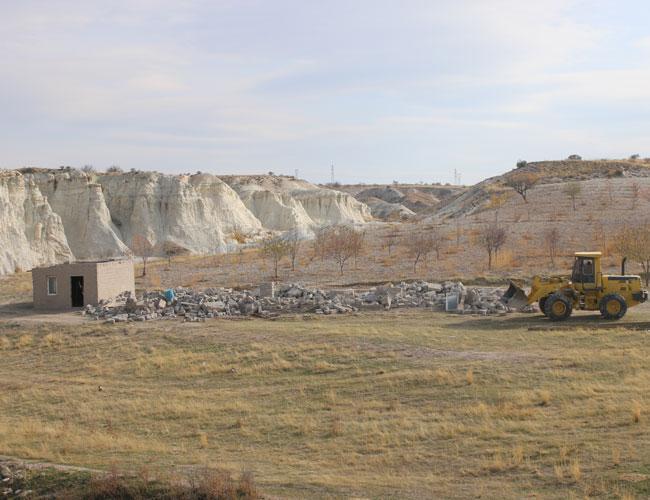
Authorities have begun demolishing illegal structures in the famous Cappadocia region in the Central Anatolian province of Nevşehir, shortly after warning that a step would be taken against them.
The first structure to be demolished, on Nov. 4, had been built after Dec. 31, 2017, meaning it was not within the scope of a “zoning amnesty,” reports said. The single-story structure was reported to be built for purposes of animal husbandry.
The move came after Turkey’s culture and urbanization ministers said such illegal structures in the historical region would be demolished.
“Those [building illegal structures] should not think they will get away with this. Because rotten eggs will be weeded out,” Culture Minister Mehmet Ersoy said during his visit to the scenic region on Nov. 3.
“There are 100 illegal structures determined one by one. All of them will be demolished,” said Environment and Urbanization Minister Murat Kurum, addressing reporters in the northwestern province of Tekirdağ on Nov. 3.
The comments from the ministries came after daily Hürriyet published complaints from locals about how the Cappadocia region was being “sacrificed” to the zoning amnesty, the process for which building registration certificates are issued for buildings that had been built without licenses and which lack proprietorship certificates.
Meanwhile, the Nevşehir Governor’s Office said on Nov. 5 that the Cappadocia region had received 324,375 domestic and foreign tourists in October. Last year, during the same month, the region had received 205,621 tourists.
The region is famous for its valleys, canyons, hills and unusual rock formations created as a result of eroding rains and winds of thousands of years.
It also has troglodyte dwellings carved in rocks and cities dug underground, presenting an otherworldly appearance.
Cities, empires and religions have risen and fallen around these unique underground havens, yet they remain occupied to this day.